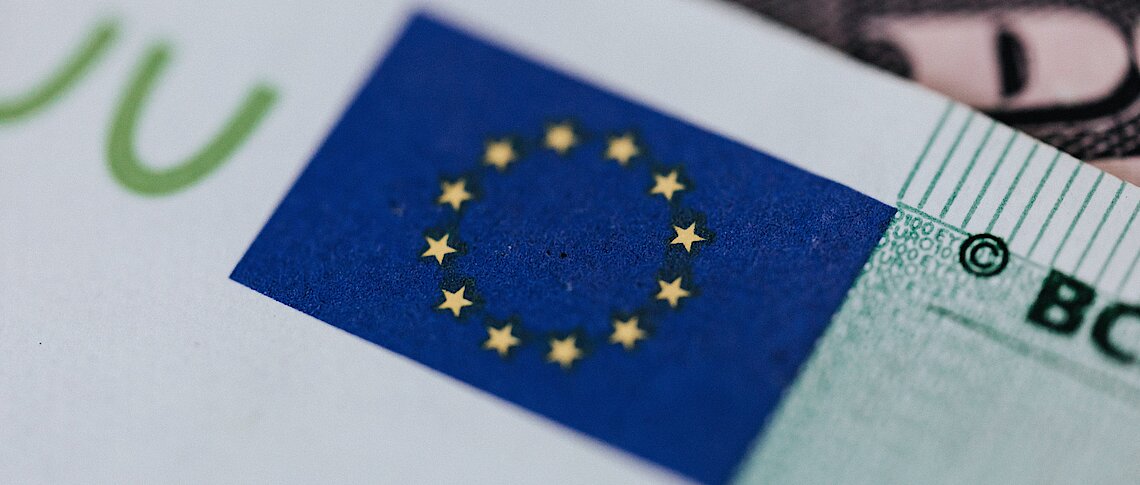Read this article in German.
The second wave of the Covid-19 pandemic has arrived in Europe and, in retrospect, last summer’s relatively low case numbers are proving to having been only an interlude. In wintertime, the risk of infection considerably increases when people stay in closed rooms. All across the continent, the situation is exactly what politicians wanted to prevent: restrictions and curfews are turning into more extensive lockdowns – if not across the board, then regional and sector-specific. In Belgium, Bulgaria, Germany, France, Ireland, the Netherlands, Austria, Slovenia, Spain and the Czech Republic, far-reaching restrictions on movement and conducting business are already in place – and other countries are expected to follow suit.
In contrast to the spring, the current crisis policy attempts to exclude the areas of economic production, trade and education. Now, over one month into the fourth quarter of 2020, it is doubtful that a selective lockdown can flatten the curve while still allowing contacts in professional life, schools, kindergartens, day care centres and commuting to remain unaffected. Anti-pandemic measures might well need to remain in place and, if the virus continues to spread, even be stepped up. Clearly, this would be toxic for the economy.
The second quarter of 2020 is showing a historically poor result, with the EU’s real GDP growth falling by 11.4 per cent compared to the previous quarter (and by 11.8 per cent in the eurozone). This will also negatively impact figures for the entire year. However, the rapid recovery of the European economies, which many did not expect after the gradual reopening in the summer months, briefly made the gloomy forecasts for annual growth in the euro zone by the European Commission (−8.3 per cent), the OECD (−9.1 per cent) and the IMF (−10.2 per cent) look exaggerated. With the renewed lockdowns, however, it is now foreseeable that the fourth quarter of 2020 will bring a further sharp decline in growth in the 19 euro countries. The IMF’s projections in October 2020 (−6.6 per cent for the entire fourth quarter) do not predict positive indicators in any country for GDP in the final months of the year.
The unemployment disater
That is all bad enough but the crisis by no means affects all European countries equally. Of course, all of them are struggling with increased numbers of infections again and are trying to find economic support programmes to head off the foreseeable double-dip recession interrupted by a brief recovery. But over the course of the year, the severity of the pandemic and the lockdown measures differ from country to country, as does the financial firepower to deal with the economic repercussions.
Based on the IMF’s GDP projections for 2020 mentioned above, Spain (−12.8 per cent), Italy (−10.6 per cent), Portugal (−10.0 per cent), France (−9.8 per cent) and Greece (−9.5 per cent) were hit harder by the economic slump. In contrast, Lithuania (−1.8 per cent), Ireland (−3.0 percent), Finland (−4.0 per cent), Estonia (−5.2 per cent) and the Netherlands (−5.2 per cent) have been affected less than the average in the monetary union. The other countries fall between a −6 and −8.3 per cent decline in their gross domestic product.
When faced with the second wave of the pandemic, governments seem to have understood how little a purely national pledge to protect its citizens is actually worth.
Those countries that have already suffered severely from the euro crisis are particularly exposed. When the pandemic arrived on the European continent, they were only just starting to see moderate growth in GDP per capita above pre-crisis level (with the exception of Greece), but now they are being set back again.
This applies even more so to social indicators: here, the wounds of the euro crisis were far from healed. In Greece and Spain, the unemployment rate was still just over 14 per cent in March 2020, only to rise again with the pandemic. For both of these countries, the European Commission expects unemployment of almost 20 per cent of the workforce for the year as a whole. Even more dramatic is the rise in youth unemployment, which in both countries had not fallen below 30 per cent of the working population before the pandemic and now exceeds 40 per cent, while in Italy and Portugal it is increasing to around 30 per cent.
Some lessons learned from the euro crisis
These figures show a persistent north-south divide in the monetary union, which has never completely disappeared after the euro crisis. The risk of poverty and social exclusion is also much higher in southern Europe than in northern Europe. The Covid-19 pandemic is now acting as an accelerant. However, at least the EU member states are not repeating the mistakes they made in their management of the financial and economic crisis, as well as the euro crisis.
In 2009, after a successful demand-side economic stimulus, they were too quick to focus on reducing the new debt they had incurred; as a result, the recovery ended early. From 2010 to 2015 they made the misguided attempt to save their way out of deflation, which inadvertently created a lost decade of European growth.
In contrast, after initial quarrels and national reflexes at the beginning of the pandemic, the heads of state and government managed to reach an agreement on the €750bn ‘Next Generation EU’ recovery plan. On the fiscal side, the EU is to be authorised to grant subsidies (€390bn) and loans (€360bn) to member states that apply for specific projects. This is supposed to stimulate the economic recovery, particularly in the next three years.
When faced with the second wave of the pandemic, governments seem to have understood how little a purely national pledge to protect its citizens is actually worth. Anyone who hoards medical equipment and future vaccines for the population of their own country can hardly expect help from their neighbours in the event of their own health emergency. Anyone who unilaterally closes border crossings to suggest to the public that the virus can be kept at bay will destroy their own domestic market and thus also harm their own citizens.
These bitter lessons were drawn from the first crisis responses in spring 2020. Now there is apparently an agreement in the European Council to keep the cross-border exchange of goods, services and capital open in all national and region-specific lockdowns and to guarantee the free movement of people – by communicating test results and the pan-European tracing of infection chains – even in the middle of the pandemic.
The power of the recovery fund
It should not be underestimated how some member states – especially Germany – have cast off ideological blinkers, which until a few years ago allowed only a neoclassical tunnel vision during the euro crisis. Last July’s above-mentioned decision of the heads of state and government, for the first time in an economic crisis, promises non-repayable financial transfers for ailing member states in the form of €390bn. The focus is not on the Union’s budget rules but on the needs of the countries. The majority of the funds are made available through the development and resilience facility and their allocation takes into account the change in per capita income, unemployment rate and output gap.
Whether this European solidarity can be realised as planned currently depends on an agreement between the European Parliament and the Council on the next financial framework for the EU until 2027.
Correspondingly, the countries of southern and central-eastern Europe benefit much more than the member states of northern and western Europe in relation to their economic strength. For the period up to 2026, Sebastian Watzka and Andrew Watt from the Institute for Macroeconomics and Business Cycle Research estimate the cumulative growth effects because of European support for the particularly affected countries of Italy, Spain, Portugal and Greece at between four and almost eight per cent of GDP.
Whether this European solidarity can be realised as planned currently depends on an agreement between the European Parliament and the Council on the next financial framework for the EU until 2027. It is far from clear whether the scope of the measures is sufficient to bring about a significant economic revival in the short term and a reduction in economic divergences in the medium term. In order to counteract the economic downturn, rapid, extensive and targeted support for demand is needed.
Adjusting Next Generation EU
The pending agreement between the European institutions is not the problem for the Next Generation EU programme, which is scheduled to begin in 2021. What is more serious are the consequences of reducing the originally planned share of grants in the overall package by the ‘Frugal Five’.
Last summer, the governments of the Netherlands, Austria, and the three Nordic member states had argued for conditional and repayable loans. Their success – to significantly reduce the €500bn in grants proposed by the European Commission as well as Germany and France and to agree a higher volume of loans in the overall package – is now falling at the feet of the crisis management team.
A number of member states have already announced that, although they are diligently preparing reform and investment plans for receiving the subsidies, in view of the relatively low refinancing rates it is currently not worthwhile to seek EU aid loans. In the background, if the reconstruction package is not exhausted, there is a justified concern about interventions in their own economic policy that can be expected in return for the credit lines as a binding condition.
For a successful European crisis management – with its dual objectives of mitigating the consequences of the recession while breaking down the divergences between northern and southern Europe that have become entrenched after the last crisis – it is essential to finally do away with certain of the pre-crisis economic-political convictions. Even the ‘Frugal Five’ must recognise that pan-European economic solidarity cannot function with the old recipes of austerity. If, during the second wave of the pandemic, the economy collapses more severely than recently predicted, the unthinkable must be on the agenda: an additional contribution to the Next Generation EU, for example through European-financed consumption incentives, through infrastructure projects planned at the European level and through a social rescue package for those people most severely affected by the economic crisis.






